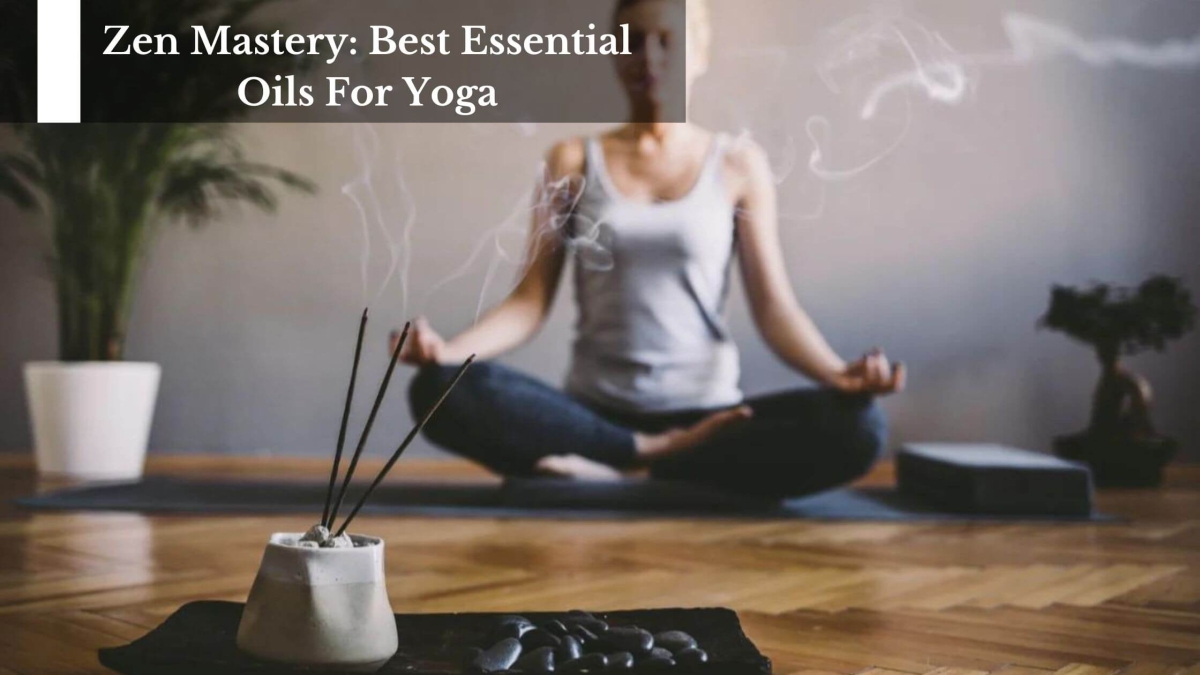Zen mastery is an ancient art using essential oils for various purposes. Essential Oils for yoga can be an excellent means to use aromatherapy during yoga and also, many are plant-based, making them safe for children. In this post, we will share some of the best essential oils: relaxation, harmony, and grounding. Yoga poses vary from a simple seated position to a complicated arm balance. It’s no surprise that yoga is often correlated with meditation – calm breathing as well as muscular control all have positive effects on the mind. That’s why it’s important to take care of your body before you start your practice, which is where essential oils come in! You can apply the oil directly onto your skin or diffuse it in the air near you. Yoga practitioners in the know use this ancient practice to enhance their routines and deepen their focus. There are many oils to choose from, but here are some of the top favorites for yoga.
You may also like:
Best Essential Oils For Yoga Practice:
1) Lavender Essential Oil
Lavender essential oil is a wonderful essential oil to use for yoga. It’s well known for its relaxing properties and is often used as a sleep aid or to combat anxiety. It can also be applied directly onto the skin or added to your bath water. You can also diffuse it before practice to set a tranquil mood. Use this in your yoga room, on the mat, or your body – anywhere you want!
2) Passion Flower Essential Oil
This flower essence is very useful for relaxation and introspection. It can be used topically or added to your bath water. The combination of lavender and passion flower is also a favorite for meditation, yoga, or sleep!
3) Sandalwood Essential Oil
This essential oil is known for its grounding abilities. It can be compared to a calm, steady hand. It helps with focus and concentration as well as inner strength. Sandalwood is a good choice for postures that require balance and internal focus like back bends or poses where you’re focusing on breathing.
4) Chamomile Essential Oil
This type of flower essence is most effective when diffused in the air because it’s easy to apply directly on the skin and its calming properties are potent when applied directly on the skin. It’s also good for meditation and relaxation.
5) Ylang Ylang Essential Oil
This flower essence has a sweet odor that can be used as both a relaxing fragrance and for meditation. Ylang-Ylang Essential Oil can be applied directly onto the skin or diffused in the air near you.
6) Geranium Essential Oil
This flower essence is ideal for inhaling, but geranium oil can also be applied directly onto the skin or diffused in the air near you to help with concentration and focus.
7) Roman Chamomile Essential Oil
This flower essence is ideal for you if you want to focus on your breathing or the energy of the room. It can be diffused in the air to help calm your nerves while you practice.
8) Bergamot Essential Oil
This type of flower essence is a well-known aphrodisiac because of its uplifting properties. Bergamot Essential Oil can be diffused for yoga or applied directly onto the skin.
9) German Chamomile Essential Oil
This flower essence is a good choice for those with mental stress or insomnia. German Chamomile Essential Oil is also an excellent way to promote relaxation that can be used on the skin or diffused in the air during yoga practice.
10) Basil Essential Oil
Basil Essential Oil is an excellent choice for attaining focus, concentration, and balance during your yoga routine with its grounding and earthy aroma. Try this in your yoga room, on the mat, or on your body – anywhere you want!
How To Use Essential Oils For Yoga Practice?
Step 1: Choose your essential oil or blend – There are several ways to use essential oils during yoga. The first is to apply the oil directly onto the body, either in a neat blend or diluted with a carrier oil like coconut oil. The second method is to add it into a diffuser and let it do its work. The third way is also, most importantly, by inhaling the aroma for its calming and focusing properties.
Step 2: Select your method – As we mentioned above, there are three ways you can use essential oils when practicing yoga. You can put the oil directly on your body, add it to a diffuser or inhale the aroma when you’re in your poses. To apply the oil now to your body, choose an area that is covered with clothing, like the back of your neck or wrists. Just make sure that it is not exposed to sunlight for extended periods. If you’re using a diffuser, first add water and then a few drops of oil into the diffuser and turn it on. If you’re planning on using an essential oil in a yoga class, try taking a few drops of the essential oil and placing them into one of those necklace pouches that have holes in them and go around your neck.
DIY Recipes Of Essential Oils Good For Yoga:

Recipe 1: For Restorative Yoga
Ingredients:
- 2 tbsps of lavender essential oil,
- 1 tbsp of peppermint essential oil,
- 1 tbsp of chamomile essential oil, and
- 1 tbsp of coconut oil.
Method:
- Mix the ingredients and add the mixture to a clean glass bottle with a lid.
- Spray around your yoga room for 15 minutes before starting to change the aura.
Recipe 2: For Meditation And Yoga
Ingredients:
- 2 tbsps of lavender essential oil,
- 1 tbsp of peppermint essential oil,
- 1 tbsp of Roman Chamomile essential oils, and
- 1 tbsp of coconut oil.
Method:
- Mix the ingredients and add the mixture to a clean glass bottle with a lid.
- Spray to lift the atmosphere during yoga classes.
You may also like:
FAQs:
1) Are essential oils better or scented candles during yoga?
Candles or aromas are good to use during yoga practice. Candles can help you to unwind and can also be useful as a distraction from your focus while practicing.
2) How often should I reapply essential oils?
When you feel that your skin is getting dry, apply a few drops of the oil on the skin’s surface and rub it in gently. When you don’t apply it for an extended period, make sure to reapply some essential oils on the skin to maintain its healthy glow.









